
How do you manage JD Edwards data without JD Edwards?
As your JD Edwards system is retired you may start to lose JD Edwards skills and knowledge. Find out how to address this challenge.
Read more >
Data Management for your JD Edwards Data
Is your organization thinking about the subject of data retention for your JD Edwards system? In this article we explore key discussion points around developing a meaningful Data Retention Policy.
Read more >
What is Data Archiving?
Find out how Data Archiving and Data Purging fit into Data Lifecycle Management
Read more >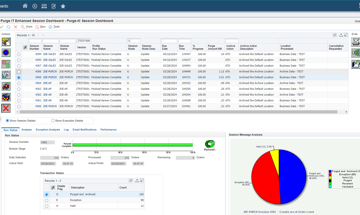
How to delete JD Edwards data that has passed its retention date and not just archive it
If your data archive is growing and you need to take action, check out how functionality in Purge-it Version 5.2 allows the possibility to completely remove old data from the archive
Read more >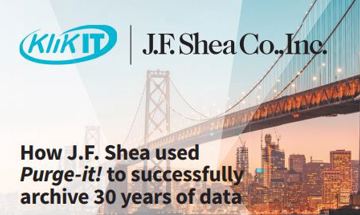
How to measure the success of Data Archiving (Part 3)
In the final part of this 3 part series of blog articles 'measuring the success of data archiving', we look at two more customer examples
Read more >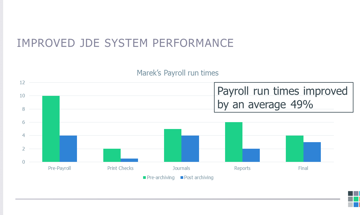
How to measure the success of Data Archiving (Part 2)
In part 2 of 'measuring the success of data archiving', we look at real customer examples
Read more >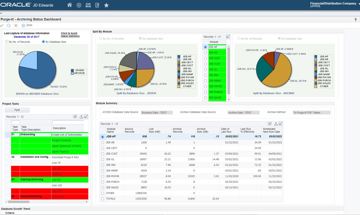
How to measure the success of Data Archiving (Part 1)
Can you measure the impact of data archiving? How do you demonstrate ROI? We address these questions and others in this JD Edwards article
Read more >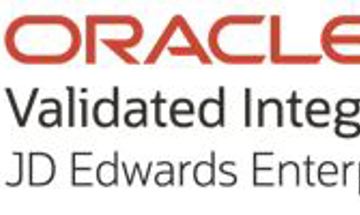
What is Oracle Validated Integration (OVI)?
Find out how Klik IT achieving Oracle Validated Integration with JD Edwards EnterpriseOne Expertise for its integration of Purge-it can help you and your organization
Read more >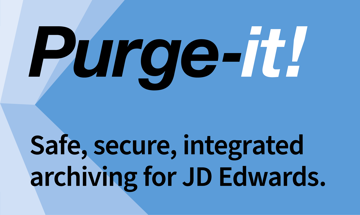
Purge-it Version 5.2 FAQs
Explore some of the most frequently asked questions relating to the latest release of the JD Edwards data archiving solution, Purge-it
Read more >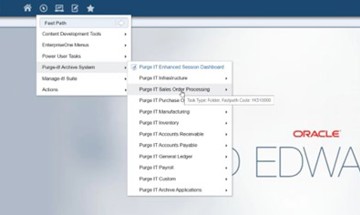
Is Purge-it easy to use for E1 data archiving?
Purge-it customers tell us one of the key drivers for choosing the data archiving solution is its usability. In this blog post we look at the main factors that make Purge-it easy to use.
Read more >
What is Purge-it?
Find out all about Purge-it. How it works, who it's for and what it offers JD Edwards users
Read more >Get a JD Edwards data healthcheck
In this blog post we look at how the JD Edwards data archiving solution Purge-it! gives your JD Edwards system a health check.
Read more >
30 features of Data Archiving with Purge-it
Discover the top 30 features of data archiving with Purge-it that make it a truly easy product to implement.
Read more >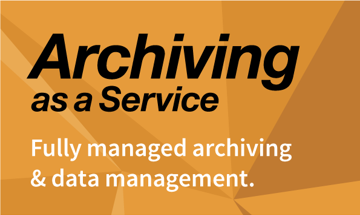
What is JD Edwards Archiving as a Service?
You're no doubt familiar with the as a Service model. Discover the business benefits of opting for Archiving as a Service for your JD Edwards E1 data archiving needs in this blog post.
Read more >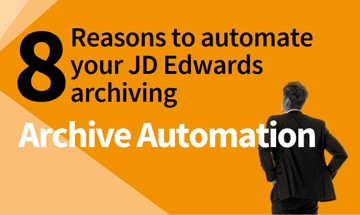
8 reasons to automate your JD Edwards archiving
Checkout this second blog post on archive automation. We zoom in on the 8 top reasons to automate your JD Edwards archiving.
Read more >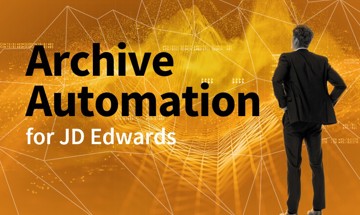
What is archive automation for JD Edwards?
Find out how human intervention in the routine task of archiving JD Edwards data can be greatly reduced. We’re talking about archive automation. It can help achieve remarkable ongoing efficiencies.
Read more >What is meant by an integrated JD Edwards archiving solution?
What's the difference between an external and an internal archiving product when it comes to JD Edwards archiving? Read our short blog post as we summarize the differences.
Read more >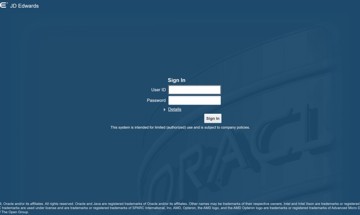
Why is JD Edwards running slow?
Deteriorating system performance negatively impacts many job functions across an organization. Find out why you system is slow. Discover how to speed up your JD Edwards system and enhance the user experience.
Read more >
Find out which version of Purge-it! your organization is running
Make sure your organization is maximizing its use of the archiving solution Purge-it! Find out which software version you have. Discover the latest product enhancements and new Purge-it! features and functionality.
Read more >
How Klik IT started 25 years ago...and what's next?
As Klik IT celebrates 25 years in business in 2023, we took some time out to chat to CEO, Terry Clarke.
Read more >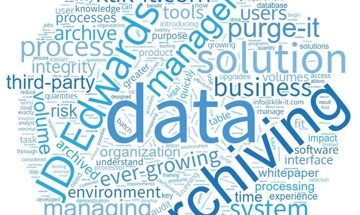
Find a JD Edwards archiving solution that works for your business. Ask these 5 questions.
Is your organization looking for a 3rd party archiving solution?
Checkout 5 key questions to ask when evaluating JD Edwards archiving tools and solutions.
Read more >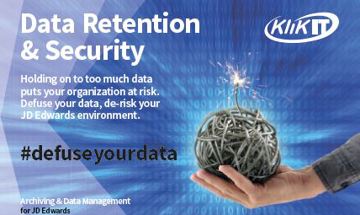
Data Retention & Security
Data Retention and Security is a hot topic and a vast subject.
In this Blog post we look at Data Retention and Security from the perspective of organizations running JD Edwards. We cover the key considerations as we see them and provide links to industry articles and information for a broader view of the subject.
Read more >How to delete JD Edwards data that has passed its retention date and not just archive it
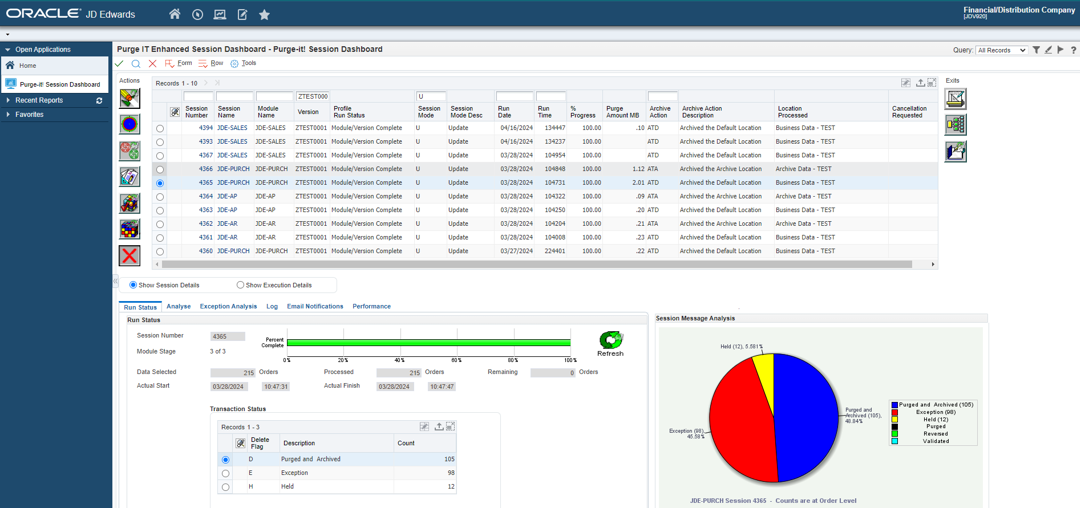
Changing trends
Recently, we’ve seen a growing trend and requirement to remove, in other words, purge JD Edwards data that has passed its useful life. Previously, the tendency was more towards archiving JD Edwards data from the production system but ultimately still retaining the data.
This changing trend has lead us to introduce a ‘fuller’ data lifecycle management (DLM) approach. Simplified functionality introduced in Purge-it Version 5.2 makes it easier to completely remove old data from the archive, based on retention dates selected by the organization.
We refer to this new functionality as ‘Archive the archive’ or ‘Purge the archive’
All the standard Purge-it modules control the full data archiving lifecycle. Initially the JD Edwards data is archived, then optionally, once the data is no longer required it can be purged from the archive.
New functionality
Purge-it Version 5.2 allows for a more sophisticated approach to data archiving. JD Edwards users can set up a tiered approach to data archiving in accordance with their company’s chosen data retention dates.
Tiered approach to Data Archiving
Let’s consider an example to illustrate how the new tiered approach could work for a business.
According to ACME Company’s Data Retention Policy, 10 years of JD Edwards data must be retained and the data must be accessible.
ACME Company’s Tiered Data Archiving
- Three years of JDE data, plus the current year’s data is retained in the production system
- Seven years of data is archived with Purge-it
- Data older than the stipulated 10 years is purged from the JD Edwards system. This is set up as an automated task in the JD Edwards scheduler, known as Purge-it Archive Automation
- 10 years of data is retained and accessible
How does this change work?
Purge-it supports two archive locations in the standard modules:
- Primary Archive – Repository for archived Production data
- Secondary Archive – Repository for archived archive data
♦ When running a Purge-it Standard Module, a new processing option value denotes whether the archive process is being run over Production, Primary Archive or Secondary Archive.
♦ When running a Purge-it Standard Module over the Primary or Secondary Archive location(s), a new processing option value will denote whether you are purging the data, or archiving it to the Secondary Archive location.
♦ Changes to the Session Dashboard identify the locations being processed by archive jobs image.
♦ Changes to the Audit Reports identify the locations being processed by archive jobs.
Important points to note
- Consideration should be taken as to whether to backup archive data before completely removing (purging) it
- As with all Purge-it functionality, these additional steps are fully auditable.
Image: Full Data Lifecycle Management | Production to Archive | Archive to Data Destruction

Summary
Archive the Archive allows JDE data that has already been archived, to be re-processed from that archive location and moved to a secondary archive or to be purged.
We refer to this as ‘Archive the archive’ or ‘Purge the archive’.
Advances in the Purge-it Data Archiving solution are primarily driven by feedback from customers and from the JD Edwards community. Increasingly, customers have a requirement to purge the archive.
This change is driven by two main factors:
- The JD Edwards data being end of life and holding little to no business benefit
- Company Data Retention policies deeming that retaining very old data introduces risk to the business due to changing data compliance laws.
News Snapshot...
Introducing Archive/Purge the archive - Full Data Lifecycle Management
Increasingly, customers have a requirement to purge the archive.
This change is driven by 2 main factors:
- The JD Edwards data being end of life and holding little to no business benefit
- Company Data Retention policies deeming that retaining very old data introduces risk to the business due to changing data compliance laws.
Archive the Archive allows JD Edwards data that has already been archived, to be re-processed from that archive location and moved to a secondary archive or to be purged.
We refer to this as ‘Archive the archive’ or ‘Purge the archive’.

Image: Full Data Lifecycle Management |
Production to Archive | Archive to Data Destruction
- Is your data archive growing?
- Do you need to take action?
Contact us to see Purge-it Archive the archive in action
